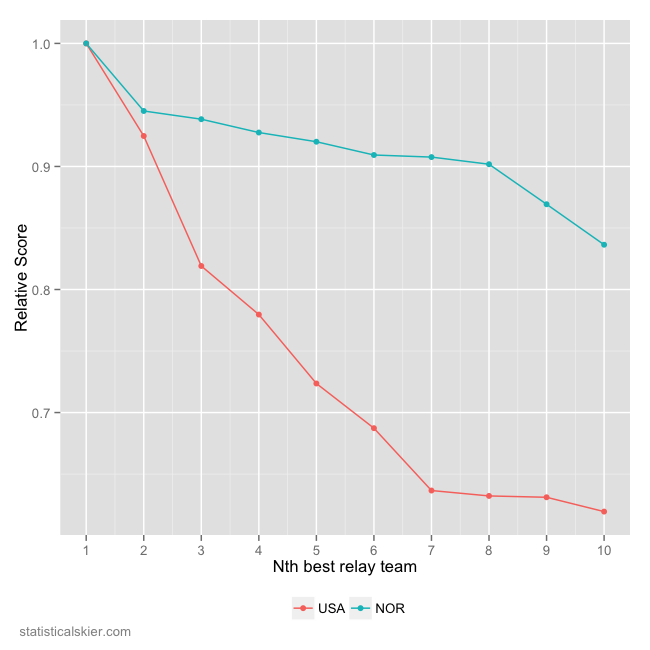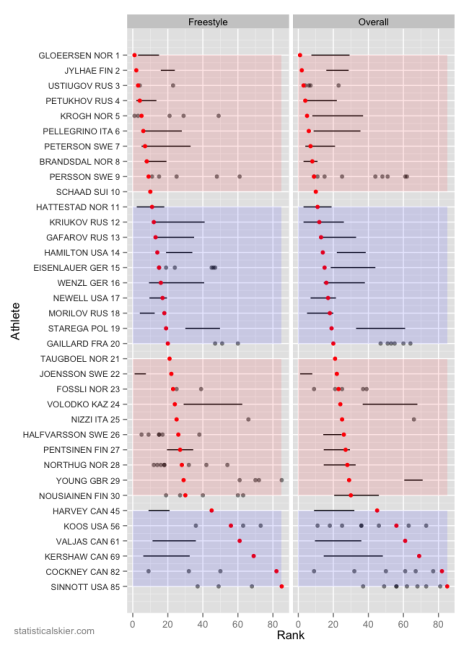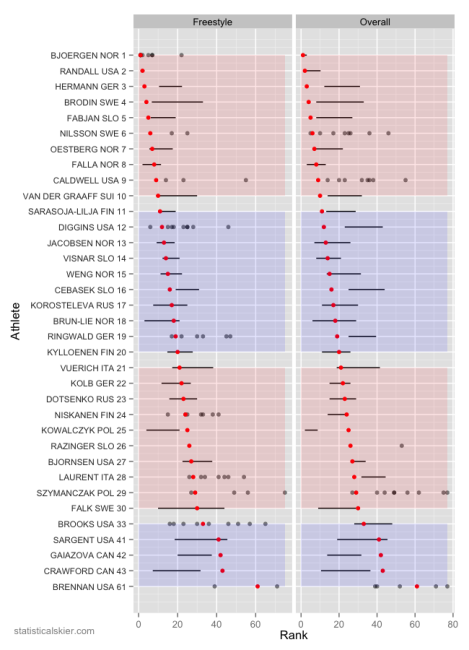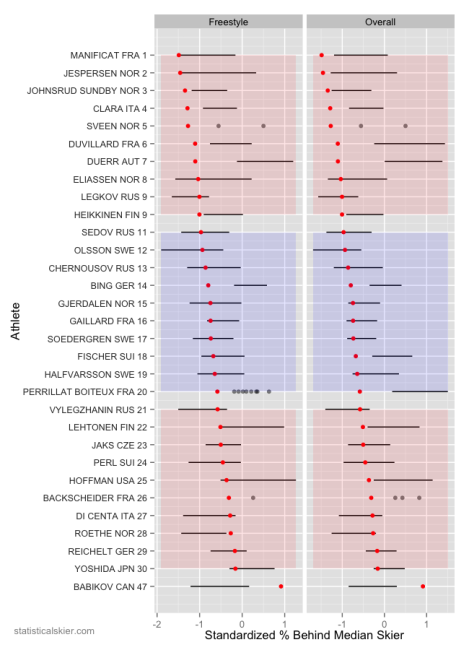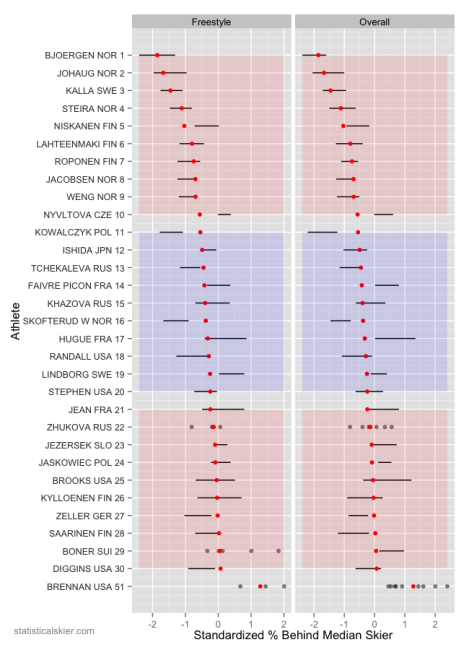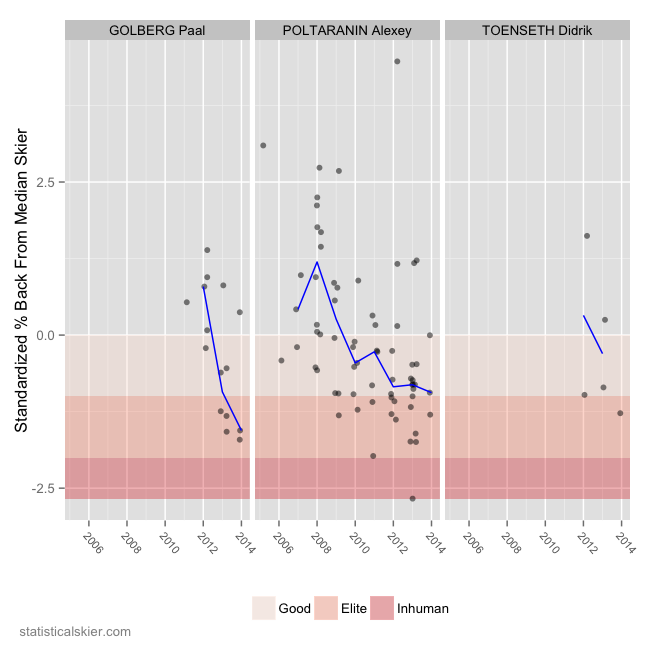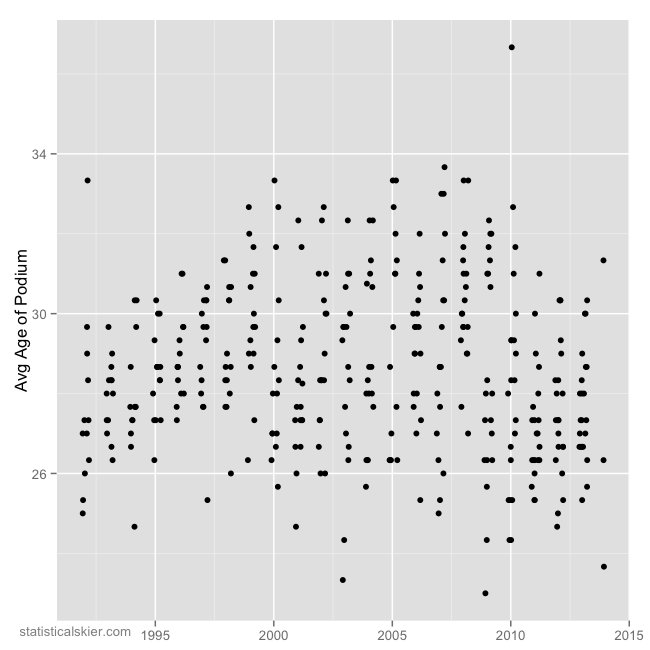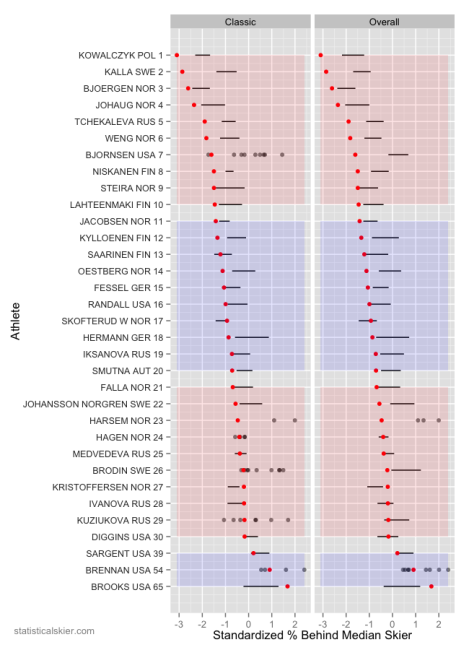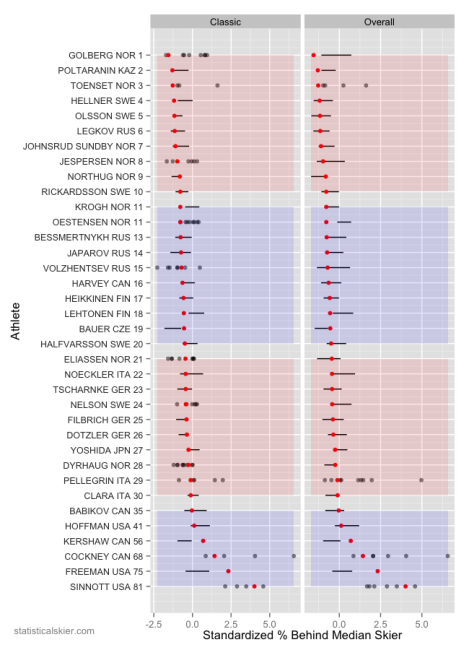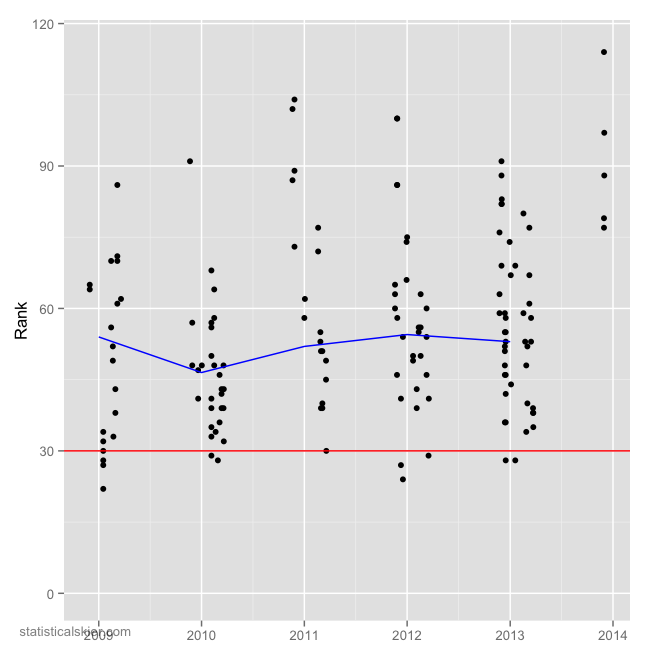Optimal Norwegian Women’s Relay Team
Now that I have some nifty code for analyzing the optimal relay team given a set of skiers to choose from, I thought I’d have some fun by looking at the Norwegian women.
Now, clearly on some level it almost doesn’t matter which folks you put on this team in addition to Bjorgen and Johaug. But I thought it would be an interesting exercise to learn a little about what my methodology is actually measuring.
Recall that what I’m doing is evaluating each skier against only the other potential relay team members. The idea being to identify who is the most “valuable” given the set of possible replacements. So each matchup between a pair of skiers is recorded, and weighted based on how recent it was. Then each combination (and order) of four skiers is evaluated comparing each leg to the potential replacements who aren’t on the team. I have no way to numerically evaluate who might be particularly suited to scrambling or anchoring, so that simply isn’t accounted for. But differences in technique are included.
My starting pool of skiers for the Norwegian women was essentially their first two teams in Lillehammer, plus Kristoffersen. This results in a bit more than 3000 relay teams, about a quarter of which are actually distinguishable by my methodology.
When I say that the composition of the Norwegian women’s team doesn’t matter much, this is what I mean:
The drop off in scores for the Norwegian women just isn’t very steep at all. The Norwegian women are a deep, deep team.
What’s more interesting to me is that my analysis strongly implies that the Norwegian team would actually be quite a bit stronger if Bjorgen skied a classic leg. The logic here is that the difference between Bjorgen and her teammates in classic is considerably larger than in freestyle, so they’d have more to gain by having Bjorgen crush everyone in one of the classic legs. The three best teams all put Bjorgen on a classic leg. The 4th/5th best shift her to skating, but then the 6th has her on a classic leg again.
The top team according to this analysis would put Bjorgen and Weng on classic legs and Johaug and Jacobsen on the freestyle legs. The 2nd best team simply swaps Steira for Jacobsen.
It’s more ambivalent about where to put Johaug. In the ten best teams, she is placed on a classic leg 4 times and a freestyle leg 6 times. For comparison, Bjorgen is placed on a classic leg 7 times and a freestyle leg only 3 times.
Tagged Analysis, Distance, norway, relay, women, World Cup